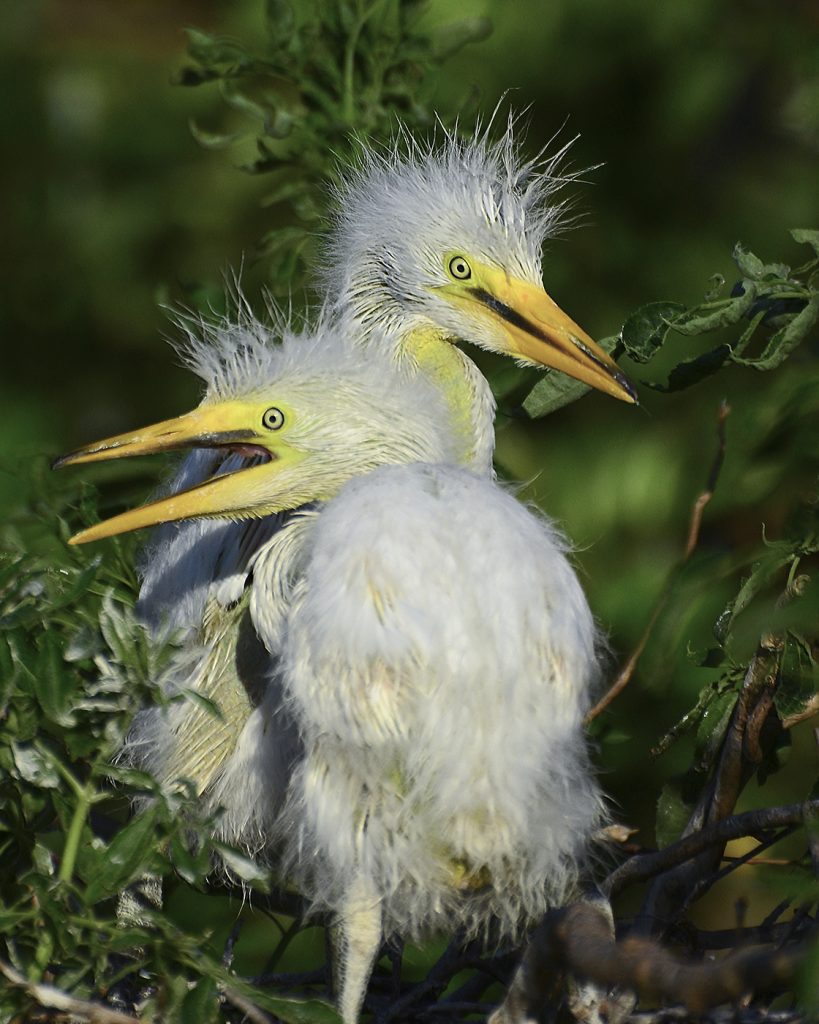There’s a saying in photography that “it’s not about the camera.” A good way to make a photographer wince is to admire one of their images and then ask, “What kind of camera did you use?” The joke is that it’s like asking a chef after a fabulous meal, “What kind of pots and pans did you use?”
And yet, when it comes to wildlife photography, there’s some truth in the notion that you do need decent equipment. An iPhone or a point-and-shoot does a great job in lots of situations—travel photography, landscapes, people, and so on—but it’s probably not going to be enough to capture a quality image of, say, a bear 300 yards away. So those of us who are passionate about nature photography tend to spend a lot of money on gear: a high-end DSLR camera body (or two), big heavy lenses, a tripod, a sturdy gimbal head to support the tripod, padded cases to carry everything in, and so on.

But investing in expensive gear is not for everyone. And when I give a presentation about wildlife photography onboard Le Boreal next January as part of the Penn State Alumni Association’s Antarctic cruise, I want to be able to offer useful advice for people who want to take good wildlife photos with the camera they happen to have.
So I’ve been thinking about compiling a list of places you can go where the wildlife is relatively (1) big and (2) close. Because that’s where you’ll have the best chance at good images, regardless of what you’re shooting with.
I’d welcome your suggestions in this regard. Here’s what I’ve got so far:
Bird banding, as I wrote about the other day, is a great way to get good bird portraits. There are bird-banding operations all over the country (Dolly Sods in West Virginia is a famous one), and it may be possible to attend a session and bring a camera.
Zoos and aviaries may not seem as satisfying as photographing animals in the wild, but they’re a great place to get comfortable with a new camera or work on technique. Last year I spent part of a day at the National Aviary in Pittsburgh and an afternoon at Bird Kingdom in Niagara Falls, Ontario, and I found myself dealing with the many of the same photography challenges I encounter in the wild: getting the correct exposure, fighting with the auto-focus, waiting for the bird to turn its head toward me, moving around to get a clean shot without a distracting twig in front of the bird’s face. It’s great practice.

Gatorland in Orlando, Fla., is best known as an adventure theme park. But it also has a bird rookery, with lots of wading birds in plain sight just a few yards from the boardwalk. Photographers can buy a permit to get in early, before the crowds do. My friend Cynthia has gone there a number of times and gotten good images (like the great egret chicks you see here) with a 70-300 lens or less.
Machias Seal Island, off the coast of Maine, has a large summertime colony of puffins and murres, and you can stand in special blinds (like small plywood sheds) to photograph the birds—some of them no more than 10 or 15 feet from you. The island isn’t easy to get to and it requires a special permit to visit; go with one of the two licensed outfitters—Bold Coast Charter, in Cutler, Maine, or Sea Watch Tours, on Grand Manan Island, New Brunswick—and be sure to make reservations months in advance. I went with my friend Elaine in June 2015 (that’s where I got the photo at the top of this page), and I recommend it highly.
So, that’s just a start. Do you know of a place in the U.S. or elsewhere where photographing wildlife is relatively easy? If so, I’d love to hear about it; please let me know in the comments.